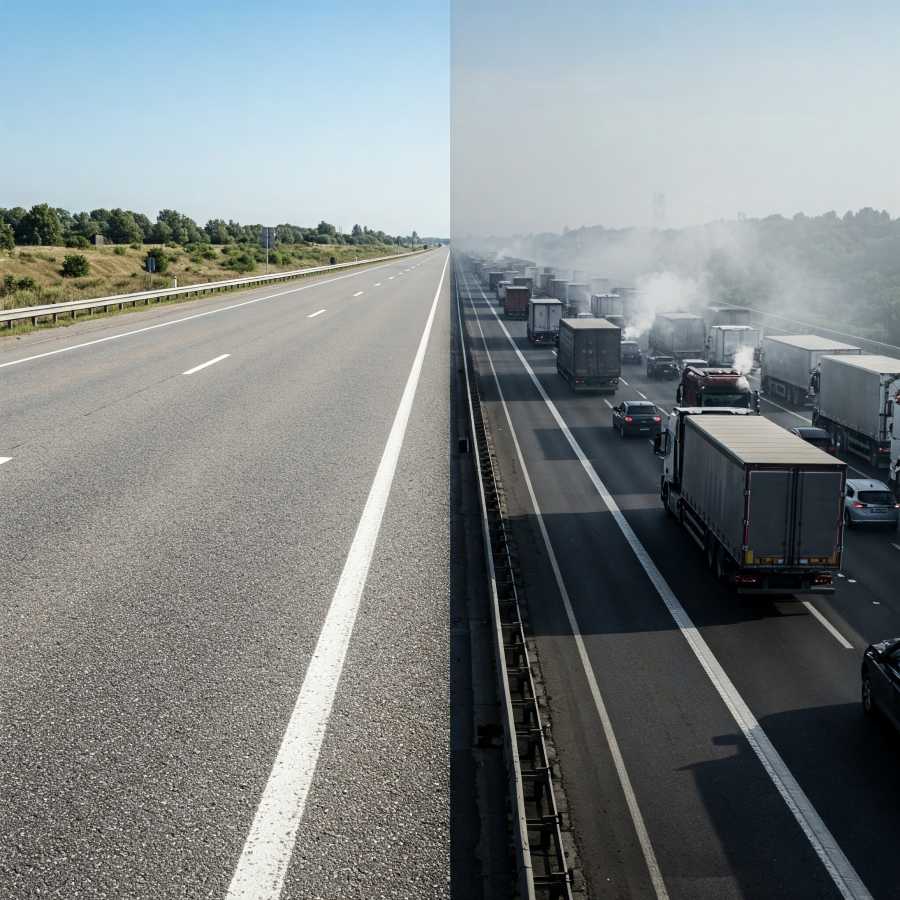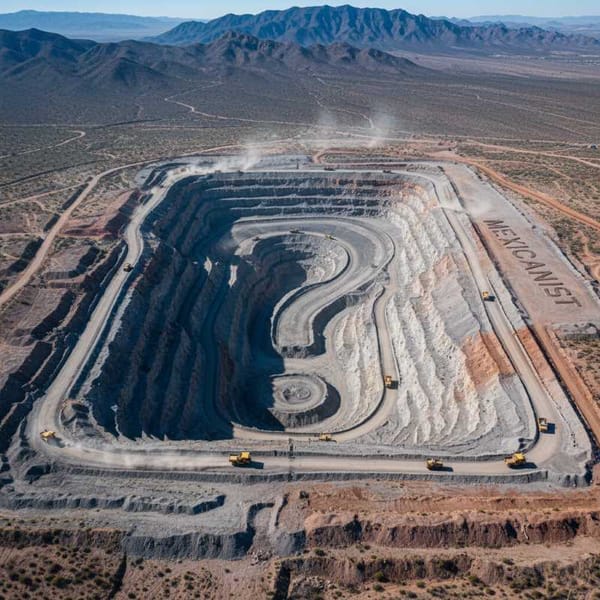Mexico's Road Plan Fuels Fears of 'Two-Speed' Economy as Industrial North Overlooked
Mexico's 2025 road plan invests 35bn pesos, but focuses on South/Central regions, neglecting key Bajío/Northern industrial hubs. Critics fear this will worsen road saturation, hinder competitiveness, and create a 'two-speed' economy, questioning the strategy's impact.

A new multi-billion peso infrastructure initiative launched by Mexico's government is facing scrutiny amid fears that its strategic focus risks creating a "two-speed" economy, potentially sidelining the country's most dynamic industrial regions.
President Claudia Sheinbaum's administration unveiled the National Road Infrastructure Program 2025 on January 16th, committing 35 billion pesos (approx. $1.9bn USD) to enhance connectivity, ostensibly aiming to link communities and bolster local economies across the nation. However, the program's apparent prioritisation of projects in Mexico's southern and central states has sparked concern among analysts and business leaders in the vital Bajío and Northern regions.
These areas, encompassing states such as San Luis Potosí, Guanajuato, Querétaro, Aguascalientes, and Nuevo León, form the backbone of Mexico's manufacturing prowess and serve as critical logistics corridors, particularly for trade with the United States facilitated by the USMCA agreement and the burgeoning nearshoring trend. The perception that these economic engines are being neglected in the latest infrastructure push raises questions about the government's strategy and its potential impact on national competitiveness.
Mexico confronts a significant challenge in its road network. According to government figures cited in the report, the national network spans over 916,000 kilometres, yet only around 179,500 km consists of paved highways. This includes roughly 51,300 km of federal roads, 104,000 km of state roads, and a mere 11,000 km of private toll highways ("autopistas de cuota"). The remaining vast network comprises largely unpaved roads.
This existing infrastructure is already under strain. Average daily traffic reportedly exceeds 1.65 million vehicles, with trucks accounting for nearly 460,000 of these movements. Saturation on principal routes is a chronic issue, particularly impacting the Bajío and North, which are crucial for exports. The Federal Highway 57, a key artery connecting Guanajuato, Querétaro, and San Luis Potosí, frequently suffers from bottlenecks, hindering the efficient transport of goods and undermining regional competitiveness.
Against this backdrop, the 2025 program's scope appears modest relative to the scale of the challenge. The 35 billion peso investment is targeted towards developing just 263 kilometres of highways, along with bridges and interchanges. Furthermore, the specific projects highlighted prioritise areas outside the northern industrial heartland. Key initiatives include the Jantetelco – Izúcar de Matamoros route spanning parts of Guerrero, Morelos, and Puebla; the Circuito Tierra y Libertad in Morelos; and the Toluca – Tejupilco connection in the State of Mexico and Guerrero. Projects are also slated for Hidalgo, Sonora, and Chihuahua.
While aiming for equitable development, the program's structure leaves major economic hubs conspicuously absent. The report notes that both the Bajío cluster and the critical Northern border state of Nuevo León appear largely sidelined. San Luis Potosí features only peripherally, linked to a project connecting Ciudad Valles with Tampico, deemed of limited impact for its core industrial base.
Nuevo León, a powerhouse state pivotal for commerce with the United States, finds itself with no relevant new works under this plan, directly threatening its logistical competitiveness and potentially hindering efforts to further integrate with Texan supply chains.
The implications of this perceived lack of investment are generating uncertainty within Mexico's most dynamic industrial corridor. For San Luis Potosí, continued dependence on the saturated and ageing Highway 57 poses a significant constraint. Guanajuato and Querétaro grapple with persistent congestion along their main transport corridors. Aguascalientes reportedly lacks crucial highway interconnection projects, limiting its growth potential. Nuevo León faces the prospect of increasing logistical isolation relative to its US counterparts without substantial upgrades.
This geographic focus has led to questions about whether the program represents genuine, broad-based modernization or a form of "disguised centralism," favouring regions aligned with the government's political base over established economic drivers. Critics argue that if the strategic focus is not adjusted, Mexico risks exacerbating regional disparities, allowing the South and Center to advance while the regions that have historically propelled economic growth are left struggling with inadequate infrastructure.
The direction chosen, observers note, will be critical in defining Mexico's economic path forward, particularly as it seeks to fully capitalize on global supply chain realignments. The question remains whether the current infrastructure strategy adequately supports the national ambition or inadvertently hampers the competitiveness of its most productive regions. The answer will significantly shape the country's economic performance in the coming years.




